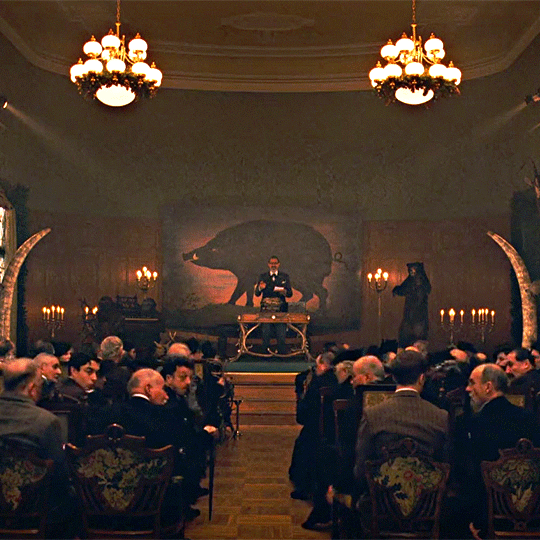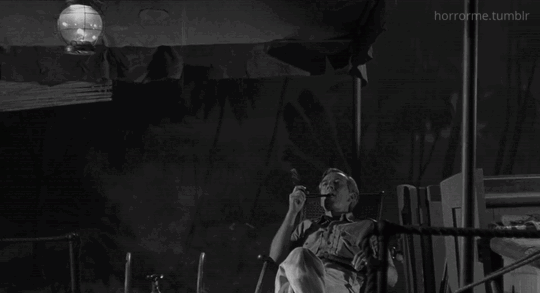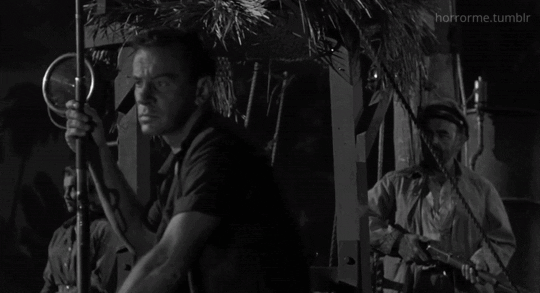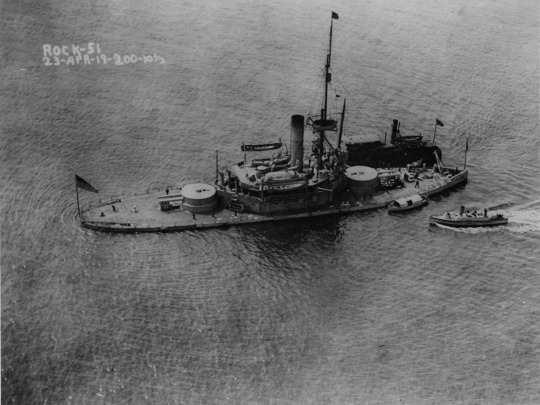Mr. Malin has been involved in the motion picture industry film movement for over 35 years and is considered one of its leading figures and strategic thinkers. His background involves marketing, distribution in all media, content acquisition, and M & A activity.
Don't wanna be here? Send us removal request.
Text








Maxwell Caulfield as Roy Alston & Charlie Sheen as Bo Richards The Boys Next Door (1985) · Horror · Crime · dir. Penelope Spheeris
977 notes
·
View notes
Text












The Grand Budapest Hotel (2014); Dir. Wes Anderson
Young Writer: Is it simply your last connection to that banished world - his world, if you will? Mr. Moustafa: His world? No, I don't think so. You see, we shared a vocation, it wouldn't have been necessary. No, the hotel I keep for Agatha. We were happy here, for a little while. Mr. Moustafa Cont'd: To be frank, I think his world had vanished long before he ever entered it. But I will say, he certainly sustained the illusion with a marvelous grace.
1K notes
·
View notes
Text

Bell Court Motel
Lost Highway series
Hasselblad 500c/m
Kodak Ektar 100iso
238 notes
·
View notes
Text













Creature from the Black Lagoon (1954)
201 notes
·
View notes
Text

On the set of PLANET OF THE APES. Photo by Dennis Stock.
8K notes
·
View notes
Text
Amir Malin Shares 4 Insights Into Achieving Success in Film and Media

There may be no business like show business, but even the most starry-eyed wannabes know it’s a tough business to break into. Any inside information could mean the difference between a star on the Hollywood Walk of Fame and a double shift at Chipotle. That’s why a close look at the strategies of pros like Amir Malin can be a make-or-break endeavor.
Why listen to Amir Malin? Perhaps you’ve heard of the movies Reservoir Dogs, Terminator 2, or Dirty Dancing. He was the CEO at Artisan Entertainment when those hits were part of their extensive library, so his bona fides are legit. Here are four insights he’s learned after years in the biz.
1. Be a Fan.
It’s no accident that Amir Malin ended up in the film sector.
Born in Tel Aviv, he moved to the States when he was young and grew up in Great Neck, NY among the children of movie executives. Typical weekend nights involved gathering for home prescreenings of upcoming films and listening to the adults discussing their merits.
In that crucible, Malin’s love for film developed. Within a few years, his childhood fascination became a teenage crush. Once he got a license, he would spend his high school weekends driving to nearby Manhasset to catch premieres at the art house theater. There, he was exposed to masters of genre and expression, like Alfred Hitchcock and François Truffaut.
Today, Malin credits his unabashed fandom as the foundation of his success. Keeping the mindset of a fan pushed him to buy and produce high-quality movies, keeping his businesses, including Artisan Entertainment and Cinecom Films, turning a profit in a crowded market.
2. Get an Education.
Those who want to enter the film space should be prepared to bring something to the table. Silver screen glamour seduces a lot of dreamers, but it’s the people who are willing to work who can find a place in Hollywood.
For Amir Malin, that meant getting a law degree. Looking back, he admits that it wasn’t the straightest path toward the film industry, but his education provided him with a skill set he could use to help the movie companies.
More than anything else, law school taught Malin how to think logically — a requirement for striking deals and understanding business. His ability to decipher legalese helped him steer companies like October Films toward bright financial futures.
Employment website Indeed agrees, advising, “Pursuing film school or learning through industry-specific trade schools can help you gain the knowledge and expertise needed for a career in entertainment. Both in-person and online programs give students a chance to learn skills from a range of specializations within the industry. These programs may also give you the opportunity to network with industry professionals and make lasting connections with fellow students who are trying to start their careers in entertainment too.”
3. Embrace Innovation.
Amir Malin’s journey through the world of entertainment and business underscores the importance of embracing innovation. In an industry as dynamic as film and media, staying relevant requires a commitment to staying at the cutting edge of technology and creative trends. Malin recognized early on that the digital revolution was transforming the way movies were produced, distributed, and consumed.
Forbes reports that artificial intelligence, the metaverse, and social media will continue to substantially impact the entertainment space. Certainly, the recent writers’ and actors’ strikes have shown that these developments must be met head-on. Whether you like these innovations or not, they’re here and that horse isn’t going back into the barn. Amir Malin suggests embracing and understanding the impacts of these changes.
4. Build Strong Relationships.
Perhaps the most important lesson Malin shares is to recognize how to talk to both suits and artists and make connections with each.
Malin's genuine love for film and his personable nature allowed him to form meaningful connections with filmmakers, actors, and industry professionals. Whether it was giving a chance to young creatives like Darren Aronofsky or showcasing established visionaries like Jim Jarmusch, Malin used his genuine love of cinema to speak with artists in their own language.
“Having a variety of contacts can help you in any career, but the entertainment industry is often considered more challenging to get into without connections,” Indeed acknowledges. “First, try finding any industry connections within your group of family and friends. Next, try joining networking groups either online or with local chapters. If you can, attend entertainment industry events that will give you a chance to talk with professionals already working in the field.”
Looking back on a life spent in the entertainment industry, it’s clear Malin’s biggest successes often came at the intersection of passion and pragmatism, artistry and analytics. Balancing business and creativity not only brought him financial success, but creative fulfillment — and that’s the true mark of a well-spent career.
0 notes
Text
The Power of Gut Instinct: How Amir Malin’s Intuition Shaped the Entertainment Industry

Did you ever get a feeling that every shred of logic told you was wrong, but you knew in your gut was right? It’s not always financial wizardry or technical perfections that push an industry forward. Often, discovering a new path to success means relying on instinct — even when it flies in the face of conventional wisdom.
One of the most legendary examples of gut feelings prevailing over industry thinking came in the mid-1990s, just as the digital revolution had begun. Bain Capital was finalizing its planned buyout of Live Entertainment. Before the asset management group finished the purchase, its staff called in industry executive Amir Malin for an insider’s perspective.
Amir Malin’s Hunch
Amir Malin was no stranger to small studios. He had built a respected name for himself after co-founding Cinecom Films, one of the most important independent film producers of the time, and serving as President and leading strategist at October Films, an independent film distribution company.
Bain trusted that his thorough knowledge of the industry would help the firm accurately plot a profitable way forward. After all, Malin trained as a lawyer. He seemed like the kind of pragmatic thinker who could ensure that Bain had a thorough understanding of the business and hadn’t negligently overlooked any potential pitfalls.
So, when he gave Bain feedback that relied on a personal hunch rather than a completely practical analysis, it was all the more intriguing.
Looking over Bain’s proposed business plan for Live Entertainment, Malin immediately saw that something was amiss. The plan projected the company would net about $1 million by selling movies on a new but unproven platform for home viewing.
Malin took issue with that estimate. He believed the profits would be much, much higher.
But what sounds like common sense in 2023 — that the DVD would overtake the LaserDisc as the dominant form of at-home movie delivery — seemed almost crazy in 1997. At the time, LaserDiscs offered higher-quality pictures while VHS cassettes allowed consumers the option to record. DVDs seemed like they provided the worst of both worlds.
Malin, however, saw things differently.
Bucking industry thinking, Malin believed that the DVD could replace both. He knew that DVDs were portable and easy to store, offering consumers a more convenient way to keep their favorite movies on hand. And they resembled CDs, which had recently eclipsed audio cassettes and vinyl records, both of which already felt like relics of a bygone era.
Malin was direct with Bain. He told them he had a gut feeling that DVDs would become the next big thing. They believed him — and everyone knows how that story ended.
A Long Line of Out-of-the-Box Thinkers
Of course, Amir Malin wasn’t the first thought leader to buck the status quo. Back when horse-drawn carriages put blacksmiths out of business, Henry Ford experienced a lull in demand for the contraptions and started losing employees. Making a move that other industrialists likely considered insane, Ford doubled workers’ wages. Productivity soared, but more than that, staffers could finally afford to buy their own vehicles — and they did.
According to a survey of global CEOs by multinational professional services network KPMG, just 35% of executives have a high confidence in their organization’s data. More than half said they ignored data analysis or computer models in the past three years because it contradicted their intuition.
“You should collect as many data points as you can,” advised Brad Fisher, KPMG’s U.S. leader of data and analytics. “But don’t throw out your intuition.”
Chipotle founder Steve Ells was fed data that pointed to opening new shops in busy locations, adding drive-thrus or a breakfast menu, or amping up the advertising budget. But something told him the tide was turning in the healthier, fresher food sector and pivoted in that direction. The rest, as they say, is history.
If you fly the friendly skies with any frequency, give a tip of the cap to Bill Allen, Boeing’s CEO back in the ’50s. The company was doing just fine working for the defense industry. But Allen sensed a change in the air. He talked Boeing’s board into investing $16 million in a transcontinental aircraft, the Boeing 707, designed to transport civilian travelers — and revolutionizing the travel industry. So the next time the airline loses your luggage, you know who to blame.
Bold leaders make bold decisions, and when they have their fingers on the pulse, like Amir Malin, Henry Ford, and Steve Ells, that can pump up the bottom line beyond a data analyst’s wildest dreams. Perhaps the old cliche needs to be reworked: Instead of going for the gusto, go for the guts.
0 notes
Text

lying advertisement towards one of Long Island's migrant labor camps, circa 1953. far from the promise of good wages and good housing, they would be housed in unheated, unplumbed buildings converted from barns, and wages were often brazenly cut or entirely stolen, to keep workers from escaping.
more information can be found in Long Island Migrant Labor Camps: Dust for Blood by Mark Torres.
10 notes
·
View notes
Text

USS Amphitrite (BM-2) off Rockaway, Long Island, New York, on April 23, 1919.
NHHC: 80-G-650318
245 notes
·
View notes
Photo





The Darjeeling Limited Wes Anderson. 2007
Luftwaffe Automotive 12-4 44th AveLong Island City, NY 11101, USA See in map
See in imdb
290 notes
·
View notes
Text

Long Island Sound, 1938 by Morris Rosenfeld
166 notes
·
View notes
Text
Amir Malin: Navigating the Intersection of Creativity and Business in the Film Industry

There is perhaps no greater test for the union of art and business than making a hit movie. It’s a storytelling on a global scale that costs millions of dollars and faces fierce competition for consumers’ discretionary dollars. In fact, it’s the very tension between artistic directors and finance-minded executives that often leads to box office bombs.
But for industry veteran Amir Jacob Malin, the challenge of marrying creative work to business sense has always been the best part of his job.
Throughout his decades-long career in the entertainment sector, Malin has consistently managed to straddle the line between left- and right-brained thinking to deliver both commercial and critical successes.
During his tenure, he helped transform a home video company into a hit studio, shepherded directors’ careers from obscurity to mass appeal, produced hit movies, and led companies to unprecedented success.
The making of a great executive
How does he do it? Perhaps it’s the unique approach Amir Malin has taken throughout his career that allows him to consistently make decisions that are both lucrative and artistically compelling.
Malin talked about his background at a finance panel discussion at the Cannes Film Festival in 2003. That approach was shaped early. While his professional training comes from Brandeis and Boston University School of Law, his artistic sensibility was shaped in screening rooms on Long Island.
A native of Great Neck, New York, Malin grew up around the children of movie executives in the days before the industry was completely rooted in Los Angeles. Many of his fondest memories involve watching yet-to-be-released films in the comfort of his friends’ homes.
During these special viewings, something about the art form connected with him, and Malin soon found himself spending his high school weekends driving to Manhasset to watch movies by Truffaut, Polankski, or Hitchcock play at the local art house theater.
As the years passed, his youthful sense of wonder crystallized into a deep passion for movies. But it was the time spent learning from his father, an entrepreneur, that revealed his natural acumen for business. He knew early on he wanted to combine both sides of himself into a career.
A vision for success
One of the clearest examples of Malin’s two-sided approach to movie industry came from the 1999 dark horse blockbuster, “The Blair Witch Project.” Famously shot on a paltry budget by three University of Florida students, the movie almost didn’t see wide distribution. It was only thanks to Malin and his colleagues at Artisan, who were the first executives to recognize the film’s commercial appeal.
Just hours after seeing “Blair Witch” at the Sundance Film Festival, Malin and his team inked a $1 million deal with the filmmakers for the rights to the film. There was just one problem—everyone thought they were wrong.
Inspired in part by the movie’s creative “found footage” style of filmmaking, Artisan spearheaded an innovative rollout plan. Under Malin’s guidance, the studio curated and spread an unofficial mythology of the film, using the early internet of 1999 as the grounds for a guerilla marketing campaign that carefully implied the movie was real recovered footage from a young documentary team.
Malin also made sure the movie opened slowly, showing on very few screens in major metropolitan areas in order to build buzz and attract excitement.
The stunts worked.
Despite its low budget, untested filmmaking team, and lack of interest from any major studio, “The Blair Witch Project” went to net $140 million at the American box office. It also cemented Artisan as a serious studio and Malin as a sharp executive with a keen artistic vision.
The end result
Building off the success of “Blair Witch,” Malin went on to secure or produce a series of independent and off-beat movies. Hits like “Requiem for a Dream” and “Van Wilder” followed, further establishing both him and his company as leading voices at the cutting-edge of filmed entertainment.
Financial success followed close behind. When Artisan was finally sold to Lions Gate Entertainment in 2003, Malin had presided over an unprecedented turnaround. The final sale brought a nearly 700 percent return for the original Bain Capital led shareholder group.
Just as remarkable as his success was his process. Despite working in the movie industry, Malin largely avoided Hollywood. He continued to live in New York, preferring to take trips to the West Coast when they were necessary. His position outside the bubble of Los Angeles allowed him to see the industry more clearly from afar.
Like all of his decisions, it was both shrewd and creative, the perfect blend of artistic vision and business knowhow.
0 notes
Text
From Artisan to Qualia: Amir Malin's Journey of Building and Nurturing Media Ventures

There’s an old saying that no one in Hollywood has a crystal ball. But entertainment industry executive Amir Jacob Malin has caused more than a few folks to question that assumption, thanks to his uncanny knack for having a strategic vision of the future.
After all, what else could explain his record? Over the last few decades, at four different and varied companies, Malin has overseen an enviable list of successful film productions, rights acquisitions, publishing deals, and distribution contracts that is lauded in the industry.
He has discovered and nurtured overlooked auteurs, breathed new life into a failing company, and managed to successfully guide libraries of movies profitably through the transition from analog to digital with ease.
As the CEO of Artisan Entertainment, Malin led the studio to new levels of success by using innovative marketing ideas and novel business approaches. Now, as the Managing Principal of the media investment firm Qualia Capital, he continues to build a new model of success—despite operating in a very different realm of business.
What’s in a name?
Early in his career, Malin made a name for himself in the world of art-house cinema. In 1982, he co-founded and oversaw Cinecom Pictures, which produced hits like “A Room with a View” and “Stop Making Sense.” He then presided over product acquisition, distribution, and strategic initiatives at October Films.
But it wasn’t until 1997, when he joined Artisan Entertainment by new owner Bain Capital, that he began working on behalf of more general audiences.
And he started with a name change.
When Bain acquired Artisan, the company was known as LIVE Entertainment. The studio’s main business was video cassettes, but it had recently opened a theatrical division that produced low-budget genre films. Hoping to steer the company toward wider, more discerning viewership, the management team jettisoned the company’s old name in favor of Artisan.
The new name signaled that the company would be handling more daring, director-led features. That was a departure from the mid-90s status quo, when movie studios relied on producing formula-based films. But Artisan saw an opportunity to bring a new kind of movie to audiences, which he believed had an unmet appetite for art-house sensibilities that wasn’t being met.
The studio bought and released “Pi” by Darren Aronofsky to a warm critical reception. It followed that success by securing rights to the auteur’s next movie, “Requiem for a Dream,” which starred Jared Leto, Marlon Wayans, and Ellen Burstyn and became both a critical and commercial success, resulting in a slew of awards.
Artisan’s strategy of building relationships with unknown and overlooked directors paid off. Under his guidance. Artisan releasing a string of innovative and successful films, such as “The Blair Witch Project,” and “Van Wilder”
Beyond the movie business
After six years of running Artisan, Malin left the movie industry. Malin sold the studio to Lions Gate Entertainment for a 700 percent return on investment.
With time to think about his next move, Malin decided to take on a different challenge and co-founded the media investment firm Qualia Capital LLC. The new company looked beyond film to other aspects of the industry, such as music publishing and TV.
In those areas, too, he showed rare foresight.
Soon after the company launched, it acquired the libraries of Gaylord Entertainment and Rysher Entertainment, which mostly consisted of older TV shows like Nash Bridges, Hogan’s Heroes, and Sex and the City. At the time, these titles were primarily shown in reruns and sometimes sold on DVD.
He believed tectonic shifts were in store for the entertainment industry. With more outlets internationally and the advent of streaming and video on demand, history proved him right.
Crystal ball or not, that’s good business.
0 notes
Text

Long Island Aviation Country Club
(Alfred Eisenstaedt. 1937)
66 notes
·
View notes


